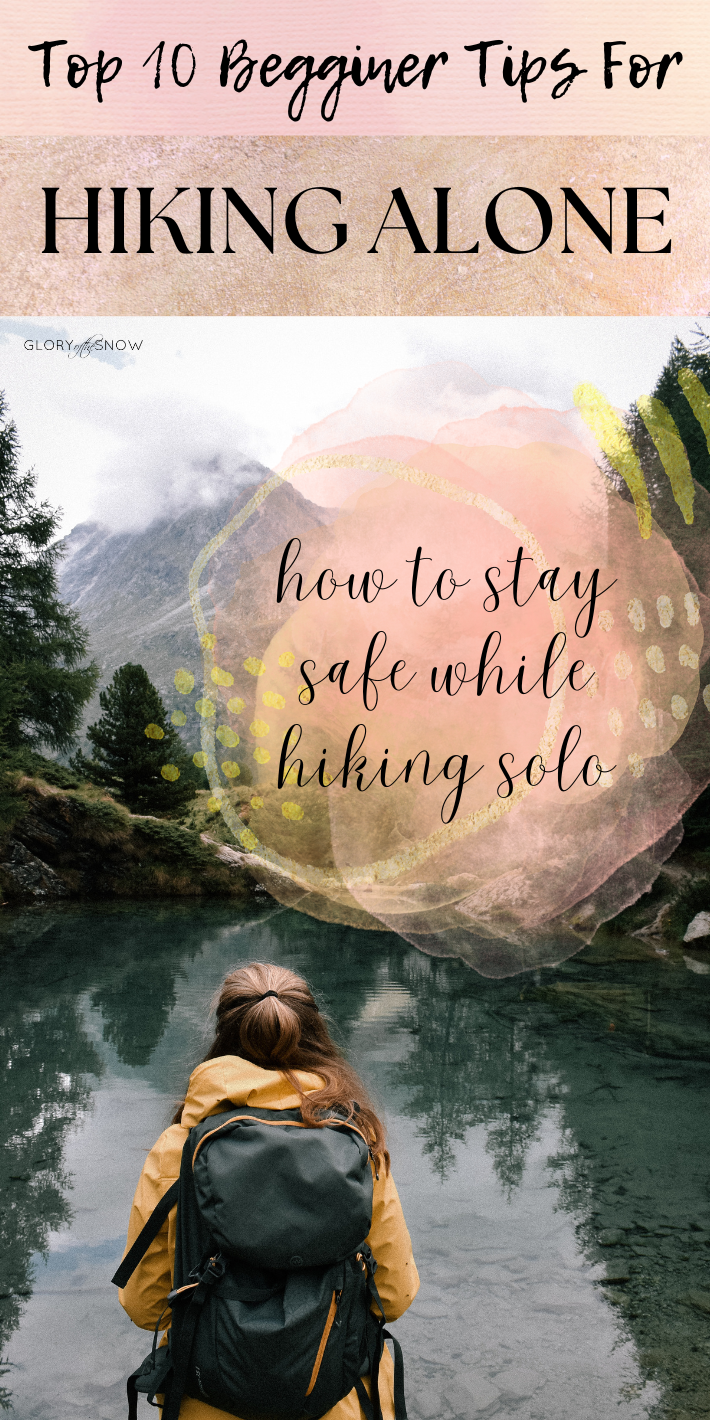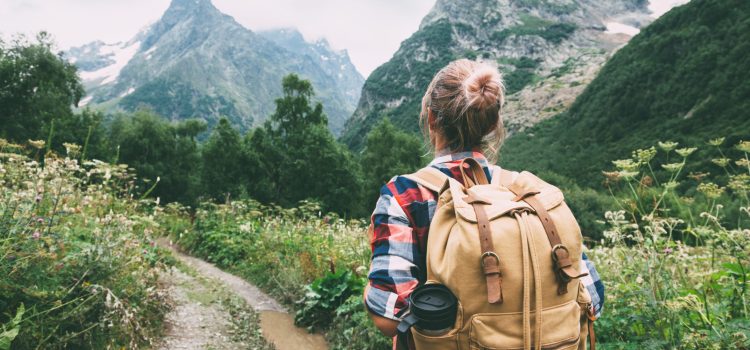Do you want to start hiking by yourself but are unsure where to start and if it’s safe? This hiking solo guide for beginners reveals the top 10 tips for hiking alone.
“Traveling alone was like laundry for my thoughts.”
Mark Foster
So you want to hike alone? Hiking solo can be a great way to experience the great outdoors.
There are many benefits to hiking alone.
For starters, it can be good for your mental health. It’s a great way to escape the hustle and bustle of everyday life, clear your head, and enjoy the peace and tranquility surrounding you. Plus, it gives you a sense of independence and self-reliance that can be very empowering.
When hiking alone, you don’t have to worry about coordinating your schedule with someone else’s. You can start your hike whenever you want, move at your own pace, set your goals, and take as long as you want to complete the trail.
This is especially helpful if you’re trying to beat the crowds on popular routes. Starting early in the morning will help you avoid the worst of the crowds.
Another advantage of hiking solo is that you don’t have to worry about making conversation or small talk with someone else. This can be a huge relief if you’re an introvert or just not in the mood for socializing. You can enjoy your thoughts and the sounds of nature without conversing with anyone else.
You want to live your life to the fullest and explore everything this beautiful world offers, but part of having a successful solo outdoor adventure is coming back alive to tell the tale.
Hiking alone also has its downsides. You’re more vulnerable to getting lost, injured, or even attacked by wildlife. So before you head out on your first alone hike, you should keep a few things in mind.
The truth is that many accidents happen because people do stupid things. So if you want to avoid being one of those people, don’t do anything stupid.
That includes climbing a dangerous cliff face without proper safety equipment, getting lost in the woods, or trying to drink directly from a stream because you’ve run out of water. Use your common sense, and don’t do anything that might result in injury or death.
This beginner’s guide will cover the basics of solo hiking, from choosing the right trail to packing the essential gear.
Hiking Alone For Beginners: Top 10 Solo Hiking Tips You Must Know
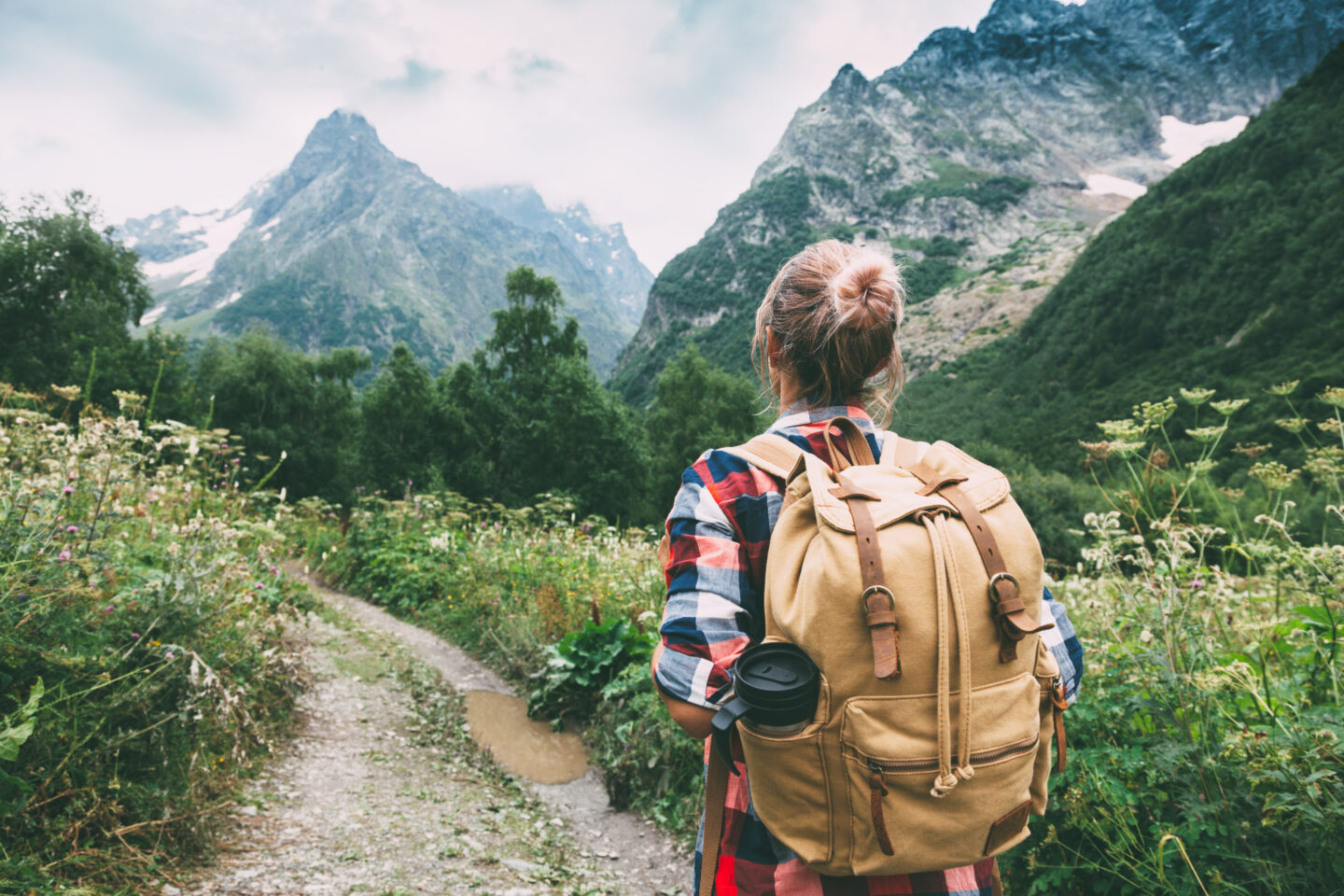
1. Choose The Right Trail
One of the most critical aspects of solo hiking is knowing your limits and choosing the right trail. When hiking alone, it’s vital to pick a trail that is within your abilities and not beyond your fitness level.
Look for well-marked hiking trails with a lower difficulty rating. Steep inclines, rocky terrain, and river crossings can all be challenging for inexperienced hikers.
If you’ve never been camping before, consider spending a few days in a controlled environment (e.g., in the wilderness but not far from civilization) first, with only a tent for shelter as a test run. Start small and work your way up to bigger adventures when you feel more confident in your skills.
2. Do Your Research
Researching trail conditions is an important step in planning your hike. You need to know what to expect to be prepared and bring appropriate gear.
Check The Weather Forecast
This one is especially important if you’re hiking in an area with extreme weather conditions like mountains or deserts. Knowing what the weather will be like will help you dress appropriately and be prepared for anything Mother Nature throws your way.
Check For Dangers
You need to be aware of any potential dangers you may encounter on the trail you picked, such as wild animals, altitude sickness, and natural disasters, e.g., rock slides or avalanches.
Check For Trail Closures Or Warnings
Before heading out, check for any trail closures or warnings for the area you plan to hike in. This information is usually available from the park service or other government agency responsible for managing the land where the hike will take place.
3. Wear Appropriate Clothing And Footwear
It’s important to wear the right clothing and footwear when hitting the trails. Loose clothing can snag on branches and undergrowth, while light colors can help you stay cool in the sun.
Wearing layers is always a good idea when hiking. You never know when the weather will turn for the worse or if you will get too hot from all the activity. Wearing layers also allows you to take the clothing off or put it on as needed.
I suggest wearing a base layer, such as a long-sleeved shirt or t-shirt, followed by a light sweater or jacket, and then a waterproof shell.
There are also some essential accessories you should always bring with you when hiking, such as a hat and sunglasses. A hat will help protect your face from the sun, while sunglasses help reduce glare.
As for footwear, sturdy hiking boots are a must. They provide support and traction on uneven surfaces, and they can help protect your feet from injuries.
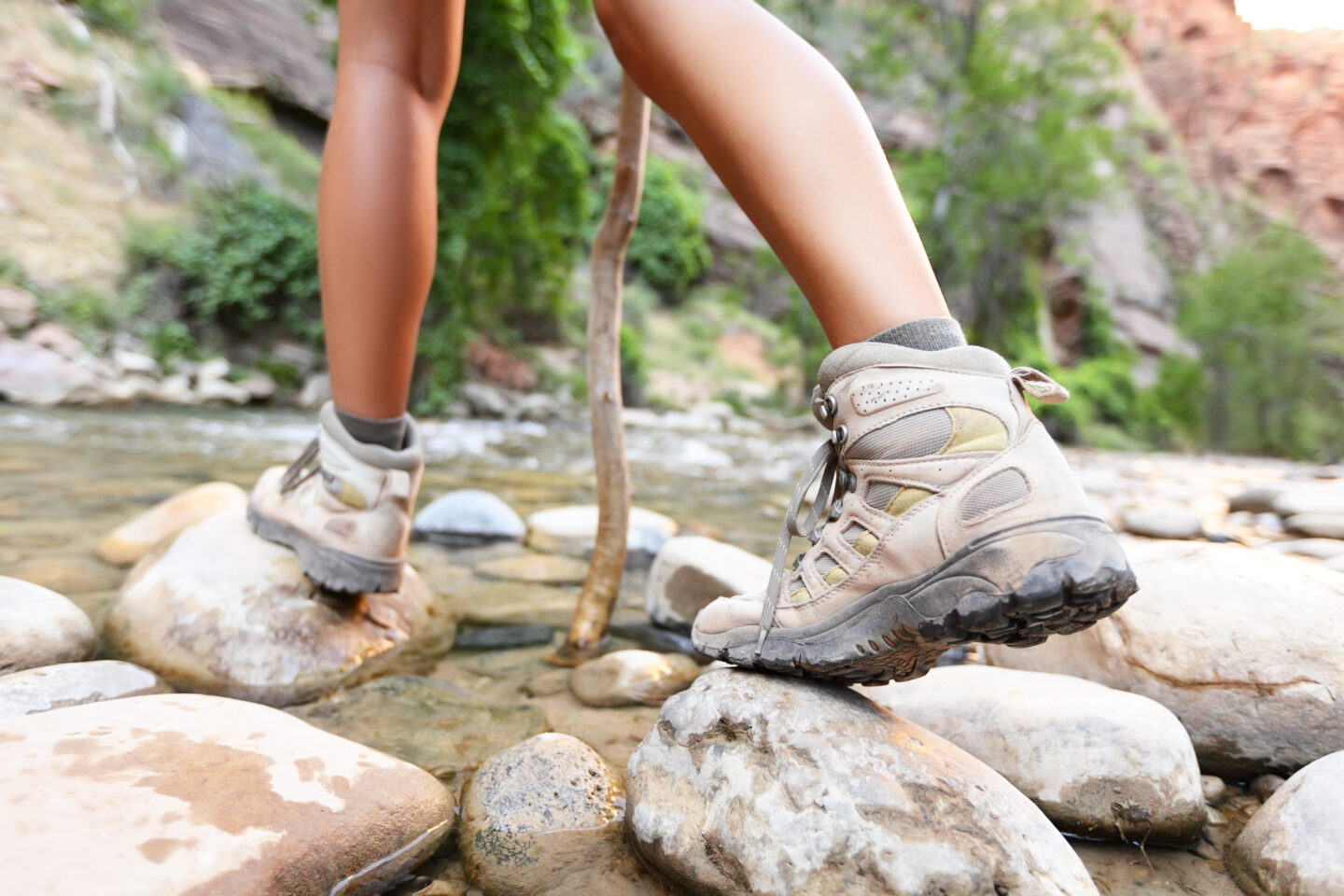
So, before heading out on your next hike, ensure you’re dressed for the occasion.
4. Pack Essential Gear
Another key element of solo hiking is ensuring you have the right gear. When hiking alone, you can’t rely on someone else to help you if something goes wrong, so it’s important to be prepared.
You’d be surprised how many people head out into the wilderness without bringing sufficient food, water, or shelter. Don’t leave home without ensuring you have everything you need to enjoy your time outdoors safely!
In addition to water and snacks, every hiker should carry a first-aid kit, a map and compass (or GPS device), an emergency whistle, and a flashlight, even if you plan to hike during daylight hours. The best option would be a head torch that lights up under your bonnet and leaves your hands free.
You should also carry a personal defense weapon against human and animal attacks, such as bear spray and a knife. Bear spray is stronger and more effective than pepper spray, and it’s a must-have in areas inhabited by bears and other wildlife.
And finally, ensure your cell phone is fully charged before you head out, as it could be your lifeline in an emergency. You should also bring a solar power bank.
Here are examples of affordable essential hiking gear you can order from Amazon.
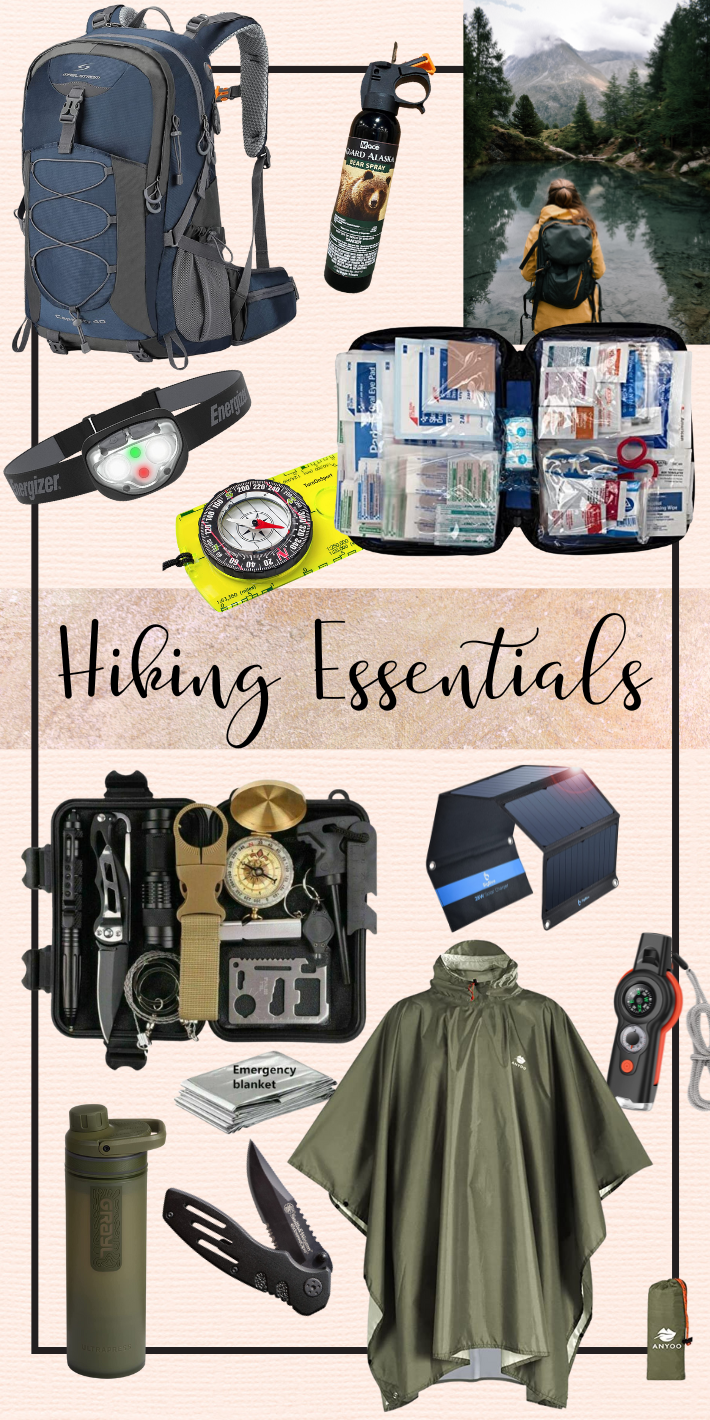
Waterproof Lightweight Hiking Backpack | Maximum Strength Bear Spray | LED Rechargeable Headlamp | Compass | First Aid Kit | Survival Gear Kit | Portable Waterproof Solar Panel Charger | Folding Knife | Water Purifier & Filter Bottle | Emergency Survival Whistle | Waterproof Lightweight Rain Poncho
Depending on the hike you’re embarking on, you may need additional gear. For example, a day hike will require different gear than an overnight hike that requires a sleeping bag, a tent, a stove/fuel combo, water treatment technology, etc.
And if you are hiking a PCT trail, you will need much more!
Lastly, make sure you know how to use all of your equipment before you head out. There’s nothing worse than being stuck in the middle of nowhere with a broken tent and no idea how to fix it.
5. Tell Someone Where You Are Going
This is crucial! If something happens to you while you’re out on your adventure, someone must know where you are supposed to be so they can send help.
Make sure to leave a detailed itinerary with a trusted friend or family member, including where you’re going and when you expect to be back. That way, they can raise the alarm and start looking for you if you don’t return when you’re supposed to.
You should not, however, share your hiking plans or location on social media, as this can compromise your safety. You can post about your journey once it’s finished and you are safely back at home.
6. Bring A PLB
A personal locator beacon (PLB) is a device that emits a distress signal that can be detected by satellite. They’re primarily used by boaters, aviators, and hikers as a last resort when all other means of communication have failed.
There are several advantages to using a PLB when hiking. First and foremost, it gives you peace of mind. If you happen to get injured or lost, you can rest assured knowing that help is on the way.
Another advantage of using a PLB is that it can save you time. If you activate your PLB, rescuers can pinpoint your location within minutes. This is especially helpful if you’re in an unfamiliar area or the terrain is particularly treacherous.
Check out this ACR ResQLink View Personal Locator Beacon with great reviews on Amazon.
PLB devices can be expensive. A good quality PLB costs upwards of $300. That said, it’s worth the investment if you hike frequently or in remote areas.
7. Stay Hydrated
Pack plenty of water. This one seems like a no-brainer, but it’s important to ensure you have enough water to last the entire hike – plus a little extra, just in case.
Depending on the length and difficulty of the hike, you may need more or less water, so plan accordingly.
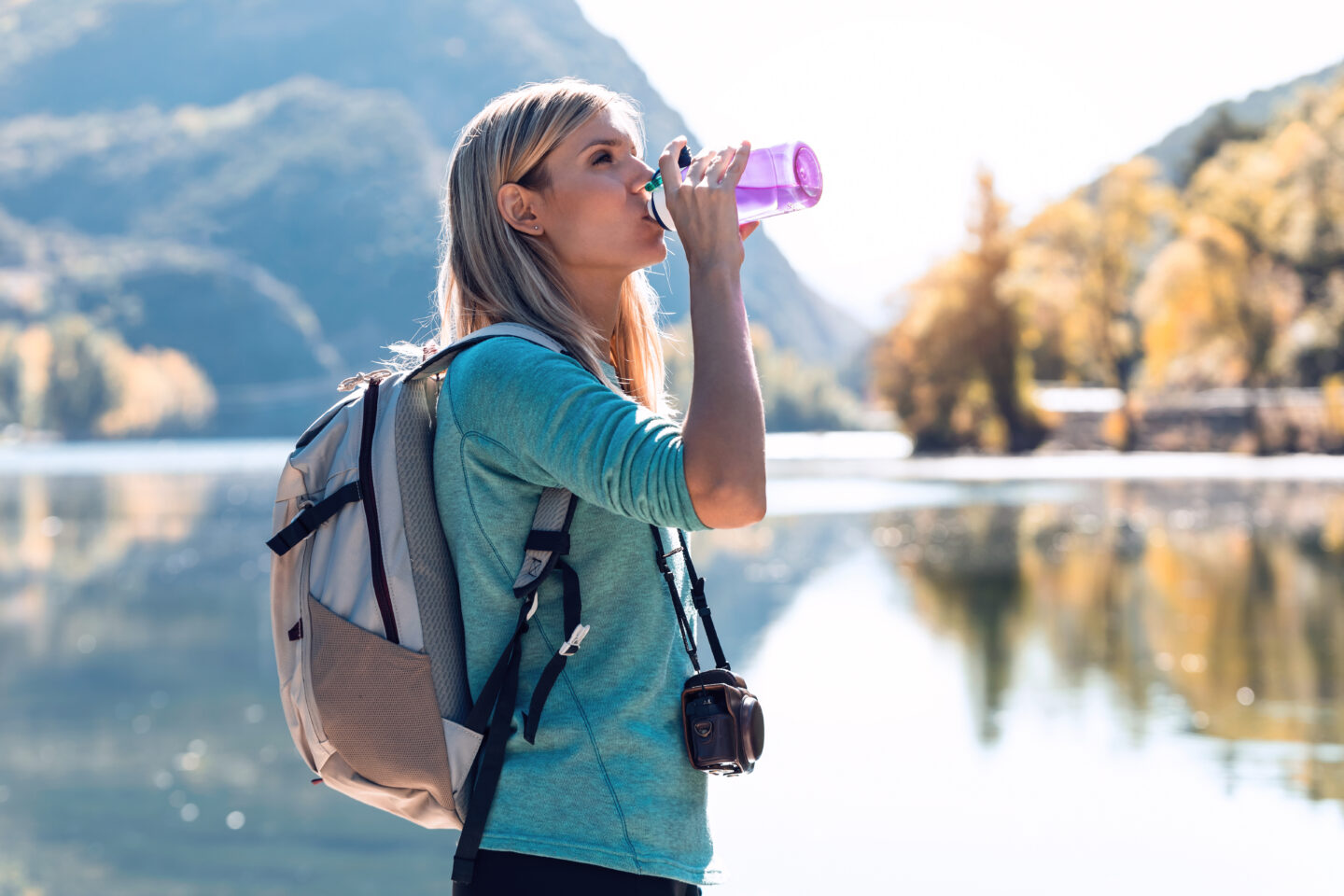
Staying hydrated is important for your health no matter what you’re doing, but it’s especially important when hiking.
When you’re exercising, your body loses water through sweating. If you don’t replace that water, you can become dehydrated. Dehydration can cause symptoms like headache, dizziness, and fatigue.
In severe cases, it can lead to heat stroke. So, it’s important to drink plenty of fluids when you’re hiking.
The best way to stay hydrated while hiking is to bring plenty of water and drink often. A good rule of thumb is to drink about 1 liter (about 4 cups) of water per hour. You might need even more if it’s hot or you’re exerting more than usual.
It’s also a good idea to drink before you feel thirsty since thirst is a sign that you’re already starting to become dehydrated.
In addition to water, you can also bring along drinks like sports drinks or coconut water for electrolytes and energy. Another good idea is to pack some high-water snacks, such as fruits or vegetables.
Unfortunately, most water sources in the wilderness, such as streams or rivers, are unsafe to drink without treatment, even if they seem super clean. They usually contain viruses, bacteria, and parasites.
If you’re going on a longer hike, consider bringing along a portable water filter in case you run out of clean drinking water.
Other water treatment options are available, such as water purifiers, chemical treatments, or boiling.
8. Stick To The Trail
Sticking to the trail is a non-negotiable rule, and it’s even more important when hiking alone.
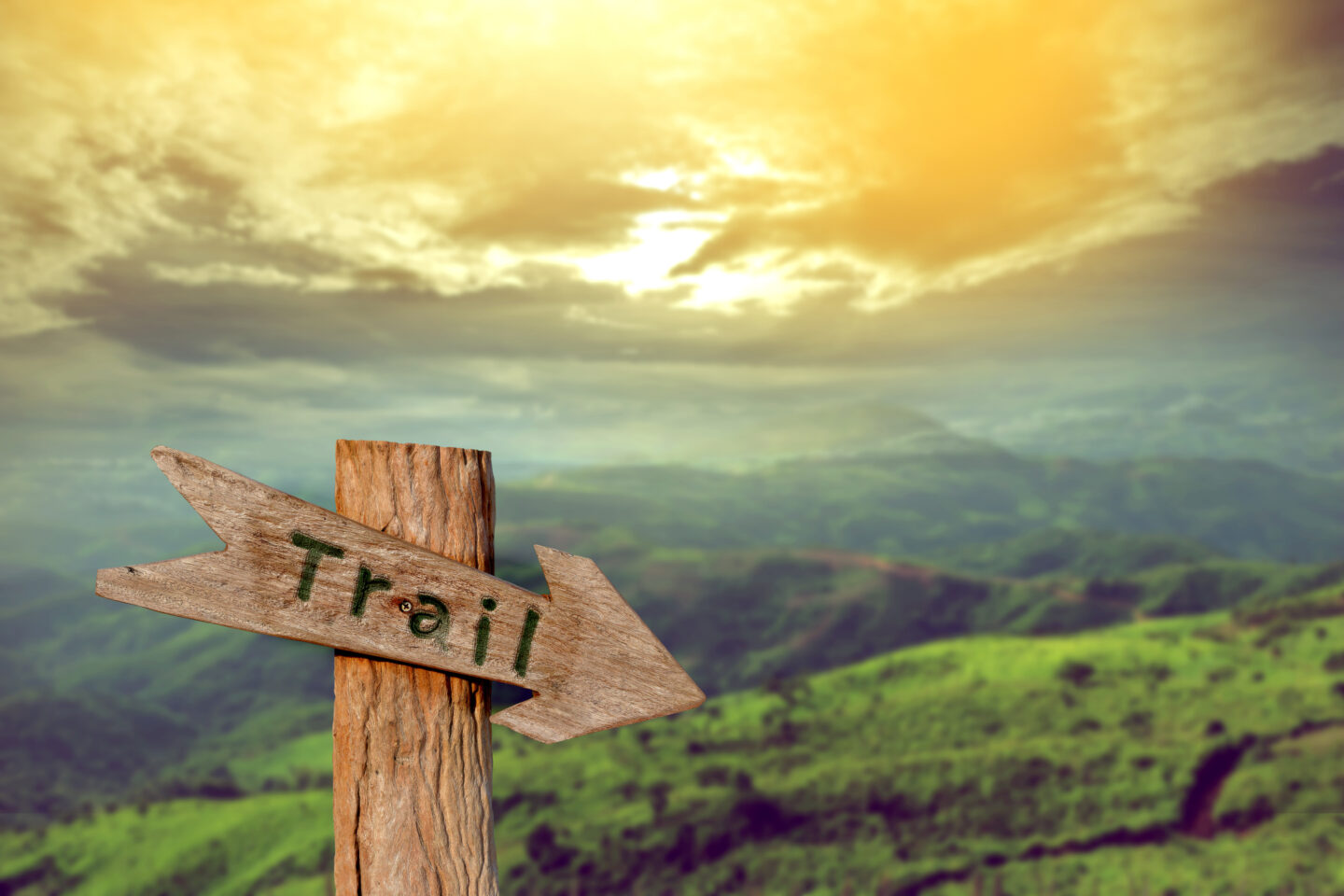
When it comes to hiking, there’s no denying there is a certain allure to striking out on your own, away from the well-worn trails. After all, what could be more adventurous than forging your path through the wilderness?
However, it’s important to remember that there are serious dangers associated with venturing off the beaten path – dangers that often outweigh the rewards.
One of the most obvious dangers of hiking off-trail is getting lost. Even for an experienced hiker, getting turned around in unfamiliar territory is easy. Once you’re off the beaten path, there are no trail markers or signposts to help you orient yourself, making finding your way back to the trailhead a daunting task.
In addition to getting lost, another danger of hiking off-trail is encountering wildlife. While it’s admittedly cool to see animals in their natural habitat, it’s important to remember that not all animals are friendly. And even friendly animals can be dangerous if they feel threatened.
For example, a mother bear with cubs is likely to attack if she feels you’re a threat to her young. So, while it’s always exciting to spot wildlife while you’re hiking, it’s important to be aware of the risks involved.
If you stick to the trail, you are less likely to get lost or injured. You will also make it easier for rescue crews to find you if something goes wrong.
9. Don’t Wear Headphones
It’s a beautiful day, and you’re ready to hit the trail. You’ve got your water bottle, snacks, and music to keep you company. But before you put on your headphones, there’s something you should know: wearing headphones while hiking can be dangerous. Here’s why.
You might be thinking, “How could wearing headphones possibly be dangerous? I do it all the time!” And you’re not wrong; wearing headphones is perfectly safe in most situations. But when hiking – especially if you’re hiking alone – it’s important to be aware of your surroundings.
Wearing headphones means you can’t hear what’s happening around you, so you might not hear if someone is coming up behind you or if there is an animal in the area. Even if your hike is on a well-traveled trail, it’s always best to err on the side of caution and leave your headphones at home.
Another danger of wearing headphones while hiking is that it can be easy to get lost in your thoughts and lose track of where you are. If you’re not paying attention to your surroundings, it’s easy to take a wrong turn or miss a crucial landmark that could help you find your way back.
All it takes is a momentary lapse in concentration to get disoriented, and once that happens, it can be very difficult to find your way back to the trail.
So, next time you’re getting ready for a hike, leave the headphones at home and enjoy the sounds of nature.
10. Listen To Experts
When in doubt, listen to the experts! In certain situations, it’s best not to go it alone, even if you think you know what you’re doing.
In these cases (and any others where your safety might be at risk), it’s always best to go with a guide who has experience dealing with whatever activity you’re taking part in.
So, if a trail looks too difficult or risky, trust your gut and find an easier one, or go with an experienced guide. It’s not worth risking your safety for the sake of adventure.
One of the best parts about having a solo outdoor adventure is coming back safe and sound with some fantastic memories and great stories. So follow these safety tips, and then go out there and enjoy yourself! Just make sure not to die in the process, as that would kind of ruin everything!
These simple safety tips will help ensure that your outdoor adventure is safe and enjoyable! So before heading out into the great outdoors alone, make sure you read this post so YOU don’t become another statistic.
Should you hike alone? Ultimately, only you can answer that question.
If you’re the type of person who enjoys challenging yourself and pushing your limits, then solo hiking might be for you. But if you prefer the company of others or tend to get lonely easily, then it might be better to stick with a partner or group for your outdoor adventures.
When someone wants to go hiking alone for the first time, they usually wonder: is hiking alone safe?
Or is hiking alone, especially as a woman, dangerous?
There’s undeniable strength in numbers, but you may be surprised that hiking solo can be safer than hiking with others. Yes, you read that right. While it might seem counterintuitive, hiking solo has several safety advantages.
First of all, when you’re by yourself, you’re less likely to take risks. With no one else around to egg you on, you’re more likely to stick to well-traveled trails and steer clear of dangerous situations.
Additionally, if something does happen when you’re hiking alone – if you get lost, for example – you’re less likely to panic and more likely to think clearly and make smart decisions.
Finally, if you do find yourself in an emergency situation, help is more likely to arrive sooner if you’re by yourself than if you’re with a group of people.
So, should you hike alone or with others? The answer isn’t always clear-cut. There are advantages and disadvantages to both options. Ultimately, the best decision is the one that feels right for you in the moment.
If you’re feeling confident and independent, go ahead and hit the trails solo. But if you’re feeling uncertain or unsafe, it’s probably best to wait until you have some company before heading out into the wilderness.
No matter what you decide, just make sure you are prepared before heading out into the wilderness on your own!
Before heading out on your next solo hike, ensure you’re familiar with the area and have all the necessary supplies. And most importantly, listen to your gut – if something doesn’t feel right, it probably isn’t!
I hope you have found these tips on how to start hiking alone helpful, and they help you feel confident next time you are on the trail.
Thanks for stopping by!
Magda
xoxo
If you enjoyed this post featuring solo hiking tips, please pin it on Pinterest to help it reach more readers!
***PIN IT***
